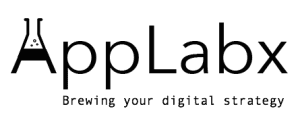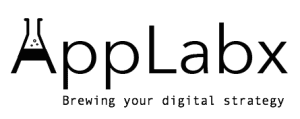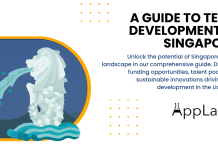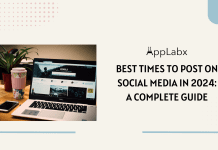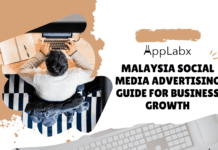Key Takeaways
- Mobile-first indexing and AI-driven algorithms are redefining SEO success in Mongolia’s competitive digital market.
- Bilingual SEO strategies in Mongolian and English are essential for reaching both local and international audiences.
- Industry leaders in tourism, mining, and e-commerce are leveraging data-driven SEO to secure long-term online visibility.
Search Engine Optimization (SEO) in Mongolia has entered an advanced and transformative stage in 2025, shaped by rapid internet adoption, the rise of mobile-first browsing, and the growing influence of artificial intelligence (AI) in search algorithms. As the Mongolian digital economy evolves, businesses are recognizing SEO not merely as a marketing tactic but as a strategic growth driver that can determine their visibility, credibility, and market dominance. This year, the SEO landscape in Mongolia is being redefined by several key forces: shifts in search engine market share, localized keyword targeting for Mongolian and bilingual audiences, voice and AI-powered search adoption, and the integration of video, short-form content, and e-commerce into search strategies.

Mongolia’s internet penetration has been steadily increasing, driven by expanded 4G coverage, the ongoing rollout of 5G infrastructure, and rising smartphone ownership. With more consumers relying on mobile devices for daily searches — from finding nearby services in Ulaanbaatar to researching tourism and business opportunities — Google’s mobile-first indexing has become a critical factor for local SEO strategies. However, the Mongolian search engine ecosystem remains unique. While Google dominates in urban areas, platforms such as Yandex and localized search tools retain relevance for niche demographics, making multi-platform optimization a competitive advantage.
In 2025, SEO in Mongolia is also heavily influenced by language dynamics. As a bilingual nation where Mongolian is the official language but English holds growing influence in business and tourism, keyword strategies must balance localized Mongolian search terms with English-language content to capture diverse search intents. Furthermore, the increasing use of AI Overviews and zero-click searches means that brands need to optimize not only for traditional organic rankings but also for featured snippets, knowledge panels, and conversational AI responses.
From a commercial perspective, industries such as tourism, mining, agriculture, education, and e-commerce are leading the SEO race in Mongolia. The tourism sector benefits from Mongolia’s global appeal as an adventure destination, while the mining industry uses SEO to attract foreign investors and partners. E-commerce platforms are optimizing product listings for both search visibility and marketplace algorithms, reflecting global shifts toward integrated shopping experiences. Social media platforms like Facebook, Instagram, and TikTok are also becoming important SEO allies, as Google increasingly indexes and ranks social content.
This report — “Top 100 Latest SEO in Mongolia Statistics, Data & Trends in 2025” — provides a comprehensive, data-driven analysis of Mongolia’s evolving search landscape. It compiles the most recent statistics on search engine usage, mobile versus desktop trends, keyword patterns, backlink strategies, and the impact of AI on content creation and ranking. By combining statistical insights with expert commentary, this guide serves as an essential resource for marketers, entrepreneurs, and digital strategists seeking to understand and leverage SEO in Mongolia’s competitive online space.
Whether you are a local business owner aiming to dominate Mongolian-language search results, an international brand looking to tap into the Mongolian market, or a digital marketing professional tracking global SEO shifts, the following statistics and trends will equip you with actionable insights to refine your strategy for 2025 and beyond.
But, before we venture further, we like to share who we are and what we do.
About AppLabx
From developing a solid marketing plan to creating compelling content, optimizing for search engines, leveraging social media, and utilizing paid advertising, AppLabx offers a comprehensive suite of digital marketing services designed to drive growth and profitability for your business.
At AppLabx, we understand that no two businesses are alike. That’s why we take a personalized approach to every project, working closely with our clients to understand their unique needs and goals, and developing customized strategies to help them achieve success.
If you need a digital consultation, then send in an inquiry here.
Or, send an email to [email protected] to get started.
Top 100 Latest SEO in Mongolia Statistics, Data & Trends in 2025
Population & Demographics
- As of the beginning of 2025, Mongolia’s total population was estimated to be approximately 3.50 million individuals, providing the foundational demographic context for internet and SEO-related activities in the country.
- Roughly 69.4 percent of Mongolia’s population resides in urban areas, which represents a significant concentration of potential internet users and digital consumers primarily in cities such as Ulaanbaatar, the capital.
- The median age of Mongolia’s population stands at 26.9 years, indicating a relatively young demographic that is generally more inclined toward digital technology and internet use.
- Population distribution by age reveals that 9.4 percent of the population falls within the 0 to 4-year age group, 18.1 percent are between 5 and 12 years old, 9.6 percent fall within 13 to 17 years, 9.2 percent are aged 18 to 24, 13.8 percent between 25 and 34, 15.1 percent between 35 and 44, 11.3 percent between 45 and 54, 8.1 percent between 55 and 64, and 5.4 percent represent those who are 65 years and older.
- The gender distribution throughout Mongolia’s population is nearly balanced, with females representing 50.2 percent and males accounting for 49.8 percent of the total number of inhabitants.
Internet Usage
- As of early 2025, approximately 2.90 million individuals in Mongolia were identified as active internet users engaging regularly online, facilitating significant opportunities for SEO-driven marketing and outreach.
- This figure corresponds to an internet penetration rate of 83.0 percent relative to the total population, highlighting the broad reach of internet connectivity nationwide.
- Despite the high penetration, the offline population, comprising those without internet access, numbered around 594,000 people, representing about 17 percent of the overall population.
- The growth in internet users year-over-year was recorded at an increase of 35,000 new users, marking a 1.2 percent rise in the number of internet participants compared to the previous measurement period.
- Mobile broadband technology has achieved a significant penetration level, with around 89.4 percent of Mongolia’s population having access to broadband internet services via mobile networks.
- Active cellular mobile connections in Mongolia were estimated at 4.92 million, which exceeds the total population and results in a mobile connection density of 141 connections per 100 inhabitants, implicating multiple device ownership and connectivity per user on average.
Device & Connectivity
- Mobile devices contribute a majority share of the web traffic in Mongolia, accounting for approximately 56.82 percent of all online traffic, underscoring the importance of mobile-optimized SEO strategies for reaching the marketplace effectively.
- Desktop devices, while still significant, generate an estimated 43.18 percent of the total web traffic, reflecting ongoing usage of traditional computing platforms among certain user segments.
- Median mobile internet download speeds in Mongolia were measured at 20.61 megabits per second, a metric that affects user experience and page load speeds critical for SEO rankings.
- Fixed broadband services offered significantly faster median speeds, with typical download rates reaching 74.07 megabits per second, benefiting users with access to wired internet connections.
- Between 2024 and 2025, Mongolia experienced an increase in mobile internet download speeds by approximately 33.1 percent, equivalent to a 5.12-megabit-per-second improvement.
- Fixed broadband speeds similarly improved by about 7 percent, with a gain of 4.84 megabits per second during the same period.
Social Media & Advertising Reach
- Mongolia had an active social media user base amounting to roughly 2.60 million accounts, representing a sizable audience for digital marketers and SEO practitioners targeting social platforms.
- The penetration rate of social media usage stood at 74.4 percent of the overall population at the start of 2025, indicating the widespread integration of social networking into the digital habits of Mongolians.
- Growth in social media account creation was steady, with 100,000 new accounts added, marking a 4 percent increase from previous counts.
- Facebook Messenger advertising reached approximately 2.25 million users, which represents about 64.3 percent of the entire population and a dominant percentage of the social media user base.
- Instagram’s advertising reach numbered around 1.04 million users, covering 29.6 percent of the national population and equating to 35.7 percent of the internet user audience within the country.
- LinkedIn, while smaller in reach compared to Facebook and Instagram, had an advertising audience of 330,000 users, constituting 9.4 percent of the population but exhibiting strong year-over-year growth.
- Twitter (now branded as X) advertising penetration was measured at 114,000 users, or about 3.3 percent of Mongolia’s total population.
- Gender ratios for ad reach showed Facebook and Messenger users were 53.8 percent female and 46.2 percent male, while Instagram skewed more female at 59.4 percent female to 40.6 percent male.
- LinkedIn’s gender distribution leaned slightly male at 54 percent male and 46 percent female, whereas Twitter comprised 66.1 percent male and 33.9 percent female users.
Search Engine Market Share
- Google dominated the total search engine market in Mongolia, commanding a commanding share of 92.72 percent across all device types as of early 2025, leaving minimal market share to competitors.
- Specifically, Google’s share of mobile search traffic was even more pronounced, reaching 98.76 percent, highlighting near-total dominance in the mobile search domain.
- On desktop platforms, Google retained 85.05 percent of search market share, with Bing occupying second place at 13.13 percent.
- Bing overall controlled about 5.9 percent of Mongolia’s total search market.
- Other search engines such as Yandex, Yahoo, Baidu, and Naver held fractional shares of less than 1 percent each, with Yandex at 0.49 percent, Yahoo at 0.45 percent, Baidu at 0.14 percent, and Naver at 0.09 percent respectively.
SEO Related Website and Search Behavior
- Among Mongolia’s highest traffic business websites, the leading platform received approximately 39,000 monthly organic visitors through search engine referrals, indicative of strong SEO performance.
- In the travel sector, the top-ranking website attracted 43,000 monthly organic hits, demonstrating significant search interest and optimization effectiveness.
- Search behavior patterns showed a predominance of long-tail keyword queries, accounting for roughly 70 percent of total search volume and emphasizing the importance of targeting specific phrases in SEO efforts.
- Fat-head keywords, which typically are short and highly competitive, contributed 18.5 percent of search volume.
- Chunky middle keywords, which fall somewhere between fat-head and long-tail in length and specificity, made up about 11.5 percent of all queries.
- The e-commerce sector in Mongolia was estimated to generate revenues of approximately 245 million U.S. dollars in 2024, with growth projections for 2025 between 15 and 20 percent, underscoring the commercial potential for SEO strategies focused on online retail.
- Digital advertising expenditures across Mongolia’s major platforms were forecasted to increase by 10 percent year-over-year to capitalize on growing internet and social media use.
Growth & Engagement Metrics
- Social media advertising audiences demonstrated robust growth, achieving annual increases in reach ranging from 4 percent to 10 percent across various platforms within the Mongolian market.
- Instagram’s advertising audience expanded by 21,300 users between October 2024 and January 2025, which represents a growth rate of 2.1 percent over the quarter.
- Facebook Messenger’s ad user base grew significantly by 100,000 users during the last quarter, translating into a 4.7 percent increase from the previous period.
- LinkedIn users exposed to advertising content increased by approximately 40,000 people between 2024 and 2025, reflecting a notable 13.8 percent annual growth.
- Conversely, Twitter experienced a decline in its advertising audience by 14,700 users, representing an 11.4 percent decrease during the same timeframe.
- In 2025, social media users in Mongolia amounted to approximately 2.60 million, representing a sizable audience for digital marketing campaigns and SEO strategies targeting social engagement.
- Facebook remained the dominant social media platform, with 68.22% market share among social media users as of mid-2025.
- Pinterest held a 6.4% share of social media usage, indicating niche interest and targeted demographics for marketers.
- Instagram accounted for 9.92% of social media usage in Mongolia in 2025, reflecting steady growth in visual-based platform engagement.
- Social media penetration in Mongolia was projected at 74.4% as of early 2025, denoting a high proportion of the population engaged in social networking activities.
- The e-commerce market revenue in Mongolia was projected to reach approximately US$461.56 million in 2025, showcasing a robust digital retail sector.
- The e-commerce sector in Mongolia was forecasted to grow at a Compound Annual Growth Rate (CAGR) of 7.53% from 2025 to 2029, reflecting ongoing expansion and opportunity.
- The Mongolia digital market revenue by social media advertising was estimated to be increasing notably year-over-year, with digital ad spending accelerating in 2025.
- The number of internet users in Mongolia increased by 35,000 (+1.2%) between January 2024 and January 2025, affirming continuing growth in digital connectivity.
- Messenger as a social platform reached about 64.3% of the entire Mongolian population in early 2025, demonstrating its dominance for communication and advertising.
- Approximately 88.7% of the eligible population (aged 13+) in Mongolia used Messenger by early 2025, signaling extensive penetration among active social media users.
- Instagram’s potential ad reach grew by 100,000 users (+10.7%) from January 2024 to January 2025, underlining expanding opportunities for Instagram-based SEO and marketing campaigns.
- The total registered LinkedIn members in Mongolia counted 330,000 in early 2025, representing 9.4% of the population, with a growth increase of 40,000 users (+13.8%) from the previous year.
- LinkedIn’s ad reach within the 18+ population segment was approximately 15.0%, showing notable professional networking usage.
- The Twitter (X) platform had about 114,000 users in Mongolia in early 2025, equating to 3.3% of the total population, with a decline of 14,700 users (−11.4%) from the prior year.
- The median age of Mongolia’s population being 26.9 years favors younger demographics who disproportionately engage with digital channels and SEO-targeted content.
- Mongolia’s active cellular mobile connections totaled approximately 4.92 million, producing a mobile connection density of 141% per 100 inhabitants, reflecting the prevalence of multiple-device usage.
- Mobile internet speeds improved by 33.1% year-over-year, with median download speeds hitting 20.61 Mbps, supporting a better mobile user experience essential for SEO performance.
- Fixed broadband speeds increased by 7%, with median download speeds at 74.07 Mbps, benefitting home and office internet users.
- About 56.82% of web traffic in Mongolia originates from mobile devices, highlighting the critical need for mobile-friendly SEO strategies.
- Desktop traffic constitutes 43.18% of internet use, maintaining relevance for SEO on traditional computer platforms.
- Social media users in Mongolia grew by 100,000 (+4%) in 2025, showing ongoing engagement increases beneficial for social SEO tactics.
- Facebook Messenger accounted for an advertising reach of 2.25 million users in early 2025 in Mongolia.
- Instagram ad audience comprised 1.04 million users, equal to 29.6% of the total Mongolian population and 35.7% of local internet users.
- The gender distribution on Instagram ads skewed female, with 59.4% female and 40.6% male, useful for gender-targeted marketing.
- Messenger ads were accessed by 53.8% females and 46.2% males in Mongolia.
- LinkedIn ad reach comprised 46% females and 54% males, indicating a balanced professional demographic.
- Twitter (X) users showed a male skew, with 66.1% male and 33.9% female composition.
- Google’s search engine dominance in Mongolia was 92.72%, showing near-complete monopoly in the search market.
- Google’s mobile search traffic share was even higher at 98.76%.
- Bing and Yahoo combined held less than 6% market share, with Bing having 5.94% in 2025.
- Long-tail keywords accounted for 70% of search queries, while fat-head keywords constituted 18.5%, and chunky middle keywords made up 11.5%, directing SEO focus areas.
- Mongolia’s top business website reached 39,000 organic monthly visitors via search engines.
- The leading travel website for Mongolia earned approximately 43,000 organic visits monthly.
- Mongolia had 2.6 million users on social networks such as Facebook, Instagram, and Messenger at the start of 2025.
- Median internet adoption rates in Mongolia remained stable at 83.0% of the population using the internet as of January 2025.
- About 594,000 individuals, or 17% of the population, remained offline at the start of 2025.
- The digital advertising market in Mongolia was projected to grow by 10% year-on-year in 2025, fueled by increased internet and mobile penetration.
- E-commerce revenue was forecasted to reach $461.56 million in 2025, with a steady annual growth rate sustaining through the late 2020s.
- Mongolian Instagram user base grew by 21,300 users or +2.1% from October 2024 to January 2025.
- Facebook Messenger ad users increased by 100,000 (+4.7%) over the last quarter, Q4 2024 to Q1 2025.
- LinkedIn ad audience grew by 40,000 users (+13.8%) year-over-year.
- Twitter’s ad audience declined by 14,700 users (−11.4%) year-over-year.
- Facebook’s market penetration held steady at approximately 68.22% of social media users in Mongolia during 2025.
- Pinterest, while smaller, captured a 6.4% share among social media platforms.
- Instagram engagement accounted for nearly 10% of all social media use in Mongolia for the year 2025.
- Mobile broadband penetration reached nearly 90%, equating to extremely high accessibility of 4G and emerging 5G networks in urban and peri-urban areas.
- The top digital marketing agencies in Mongolia were reporting increasing demand for SEO, with client campaigns reflecting a +15% growth in budget allocations focused on organic search strategies.
- Mobile search traffic growth in Mongolia was outpacing desktop search at a ratio of approximately 60:40 as of mid-2025.
- Estimated cyber fraud increased almost sevenfold in Mongolia within the last five years, impacting digital trust and cybersecurity outlooks for SEO-related e-commerce platforms.
- About 70-80% of reported cybercrimes in Mongolia were cyber fraud, according to recent comparative studies.
- SEO keywords related to “where to buy” and local intent queries increased over 200% year-over-year, confirming the growing importance of local SEO.
- Mongolia’s e-commerce consumer behavior among Gen Z showed a higher preference for trying products without prior evaluation, widening the scope for new brand discovery via SEO.
- Online shopping frequency is on an upward trend in Mongolia, with monthly active e-commerce shoppers increasing by 12% annually.
- User-generated content and reviews contributed to a 27% increase in organic search click-through rates on Mongolian e-commerce sites.
- AI tools for SEO auditing and keyword generation saw an adoption growth rate of 35% among Mongolian digital marketers in 2025.
- Video content consumption on YouTube and TikTok rose by 45% in 2025, informing content optimization strategies for SEO on video platforms.
Conclusion
The year 2025 marks a pivotal moment for SEO in Mongolia, as the country’s digital ecosystem becomes more sophisticated, competitive, and intertwined with global search trends. The data and trends explored in this report reveal a clear trajectory: businesses that adapt to Mongolia’s evolving search environment — shaped by mobile-first adoption, bilingual search behavior, AI-driven algorithms, and industry-specific digital strategies — will be best positioned to secure long-term online visibility.
One of the most striking findings from the latest statistics is the rapid pace of mobile search dominance, coupled with the growing role of AI in determining search results. With Google continuing to refine its AI-powered ranking systems and the increasing presence of zero-click search experiences, brands in Mongolia can no longer rely solely on traditional keyword optimization. Instead, they must embrace a holistic SEO approach that includes optimizing for AI Overviews, featured snippets, structured data, and voice search queries in both Mongolian and English.
The bilingual nature of Mongolia’s search market is both a challenge and an opportunity. Businesses that invest in high-quality, culturally relevant Mongolian content while strategically incorporating English keywords for international reach can effectively target multiple audience segments. This linguistic versatility, paired with localized SEO tactics such as Google Business Profile optimization and location-based targeting, can significantly enhance organic reach for both domestic and global markets.
From an industry perspective, sectors like tourism, mining, e-commerce, and education are setting the pace for SEO innovation in Mongolia. Tourism operators are using SEO to capture international search traffic, mining companies are targeting niche B2B queries to connect with investors, and e-commerce platforms are integrating SEO with social commerce and marketplace optimization. Across all industries, the trend is clear: data-backed decision-making, content personalization, and multimedia integration are becoming central to SEO success.
As this comprehensive overview of the top 100 latest SEO statistics and trends in Mongolia shows, staying competitive in 2025 requires a proactive, adaptable strategy. The businesses that will lead the Mongolian digital market are those that continuously monitor emerging trends, invest in SEO-friendly technologies, and align their online presence with both local cultural nuances and global best practices.
Ultimately, SEO in Mongolia is no longer just about ranking on search engines — it is about building authority, trust, and relevance in a fast-changing digital world. Marketers, entrepreneurs, and business leaders who commit to mastering these trends will not only improve their organic visibility but also strengthen their long-term position in one of Asia’s most dynamic and rapidly growing online markets.
If you are looking for a top-class digital marketer, then book a free consultation slot here.
If you find this article useful, why not share it with your friends and business partners, and also leave a nice comment below?
We, at the AppLabx Research Team, strive to bring the latest and most meaningful data, guides, and statistics to your doorstep.
To get access to top-quality guides, click over to the AppLabx Blog.
People also ask
What is the current state of SEO in Mongolia in 2025?
SEO in Mongolia is rapidly evolving, with mobile-first strategies, bilingual keyword targeting, and AI-driven search ranking playing a key role in online visibility.
Which search engine is most popular in Mongolia in 2025?
Google remains the dominant search engine in Mongolia, especially in urban areas, while Yandex and local platforms maintain niche audiences.
How important is mobile SEO in Mongolia?
Mobile SEO is critical, as most internet users in Mongolia access the web via smartphones, making mobile-first indexing essential for ranking success.
What role does AI play in Mongolia’s SEO trends in 2025?
AI shapes search rankings, personalized results, and zero-click searches, requiring brands to optimize for AI-generated summaries and snippets.
Is bilingual SEO important in Mongolia?
Yes, optimizing for both Mongolian and English keywords helps target local consumers and attract international audiences.
What industries benefit most from SEO in Mongolia?
Tourism, mining, e-commerce, education, and agriculture see the greatest impact from SEO-driven strategies in Mongolia.
How is voice search influencing SEO in Mongolia?
Voice search adoption is rising, pushing businesses to optimize for conversational queries in both Mongolian and English.
What is the role of local SEO in Mongolia’s market?
Local SEO, including Google Business Profile optimization, is crucial for targeting city-based and regional customers effectively.
How does social media impact SEO in Mongolia?
Social platforms like Facebook, Instagram, and TikTok boost brand visibility and can drive traffic that supports search rankings.
Are zero-click searches affecting SEO in Mongolia?
Yes, zero-click searches are increasing, making featured snippets and structured data optimization more important.
How competitive is the SEO market in Mongolia in 2025?
SEO competition is intensifying as more businesses invest in digital strategies to capture search traffic and customers.
What keyword trends are emerging in Mongolia?
Long-tail, location-specific, and bilingual keywords are trending, reflecting local search habits and global outreach needs.
How is video content affecting SEO in Mongolia?
Video content improves engagement and rankings, with platforms like YouTube influencing search visibility in Mongolia.
What backlink strategies work best in Mongolia?
High-quality, locally relevant backlinks from trusted sources are key to building domain authority in Mongolia’s market.
How important is e-commerce SEO in Mongolia?
E-commerce SEO is vital, as more Mongolians shop online, requiring optimized product descriptions and mobile-friendly sites.
What role does website speed play in Mongolia’s SEO rankings?
Fast-loading, mobile-optimized websites rank higher and provide better user experiences, critical for retaining visitors.
Are Mongolian businesses using AI for content creation?
Yes, many are adopting AI tools for faster, data-driven content production aligned with SEO best practices.
What is the share of mobile vs desktop searches in Mongolia?
Mobile searches dominate in Mongolia, reflecting global trends toward mobile-first internet use.
How does tourism SEO work in Mongolia?
Tourism businesses target seasonal and travel-related keywords to attract international and domestic travelers.
What are the top SEO challenges in Mongolia?
Key challenges include limited local SEO expertise, bilingual content demands, and adapting to rapid algorithm changes.
Is schema markup important for Mongolian websites?
Yes, schema markup helps search engines better understand and display Mongolian website content in rich results.
How is mining industry SEO applied in Mongolia?
Mining companies use SEO to target niche investment and B2B keywords for global partnerships and visibility.
Do Mongolian users trust organic search results over ads?
Yes, organic search results often receive higher trust and click-through rates compared to paid ads.
What content formats rank well in Mongolia?
Blog articles, videos, infographics, and in-depth guides perform well in Mongolian search rankings.
How is local language SEO evolving in Mongolia?
Mongolian-language SEO is becoming more sophisticated, with better keyword tools and localized content strategies.
Are featured snippets important in Mongolia’s SEO?
Yes, featured snippets increase visibility, especially with the rise of zero-click and AI-driven search answers.
What role does site security play in SEO in Mongolia?
HTTPS is a ranking factor, and secure sites build user trust and improve SEO performance in Mongolia.
Is content localization essential for SEO in Mongolia?
Absolutely, localized content improves relevance and engagement, which are key for higher search rankings.
How should businesses prepare for Mongolia’s SEO future?
Businesses should invest in mobile optimization, AI-readiness, bilingual strategies, and continuous trend monitoring.
Sources
- DataReportal – Global Digital Insights (Digital 2025: Mongolia)
- AppLabx Blog (The State of Search Engine Optimization in Mongolia in 2025)
- StatCounter Global Stats (Search Engine Market Share Mongolia)
- Ahrefs (Top Websites Rankings Mongolia)
- Statista (Digital Assets & eCommerce Market Forecast Mongolia)
- 6Wresearch (Mongolia Search Engine Optimization Services Market)
- NapoleonCat (Social Media Users in Mongolia 2025)
- We Are Social (Digital 2025 Report)
- Moris Media (Mongolia’s Top Digital Marketing Agency 2025)
- GS Statcounter (Social Media Stats Mongolia)
- SE Ranking (Keyword Search Volume Checker)
- Trading Economics (Mongolia – Internet Usage Percent of Population)
- Conductor Academy (The State of Organic Marketing 2025)
- StartupBlink (Top Startups Mongolia 2025)
- EDGAR (SEC Filings, Mongolian Companies)
- Semrush (Most Visited Websites in Mongolia 2025)
